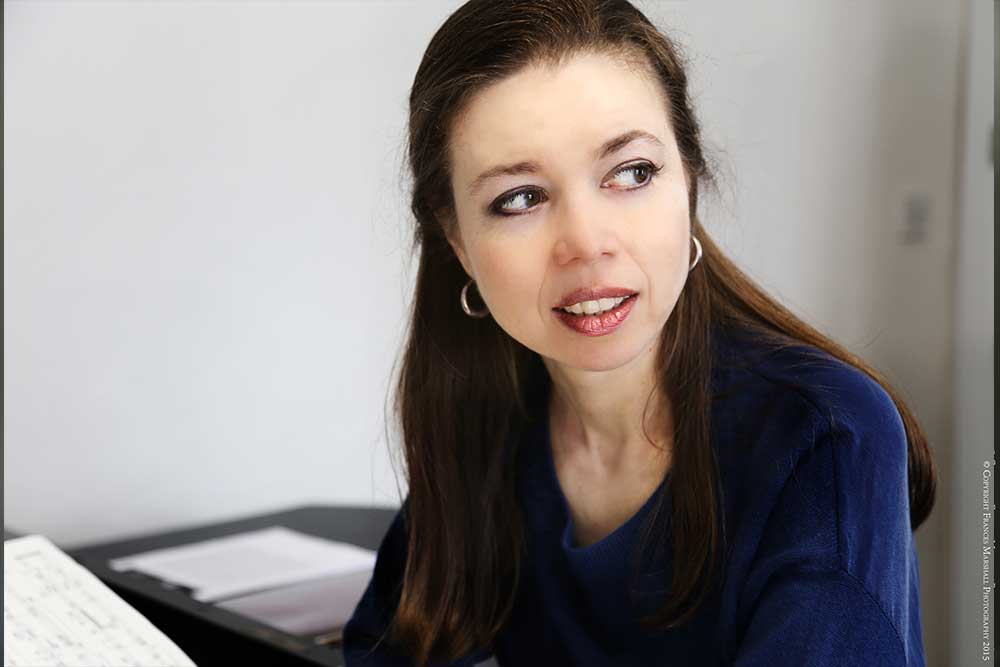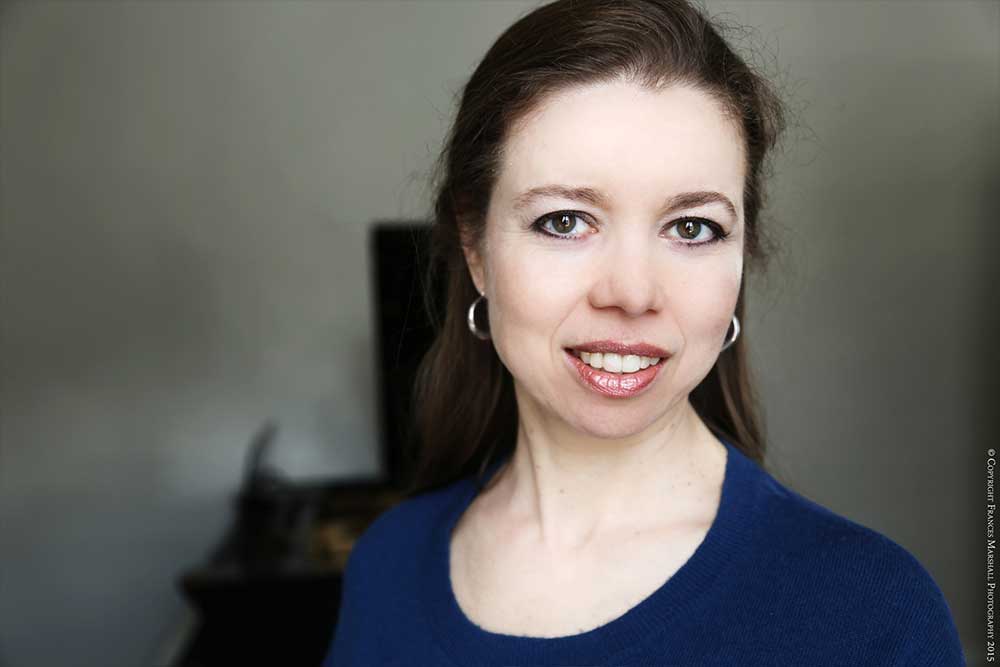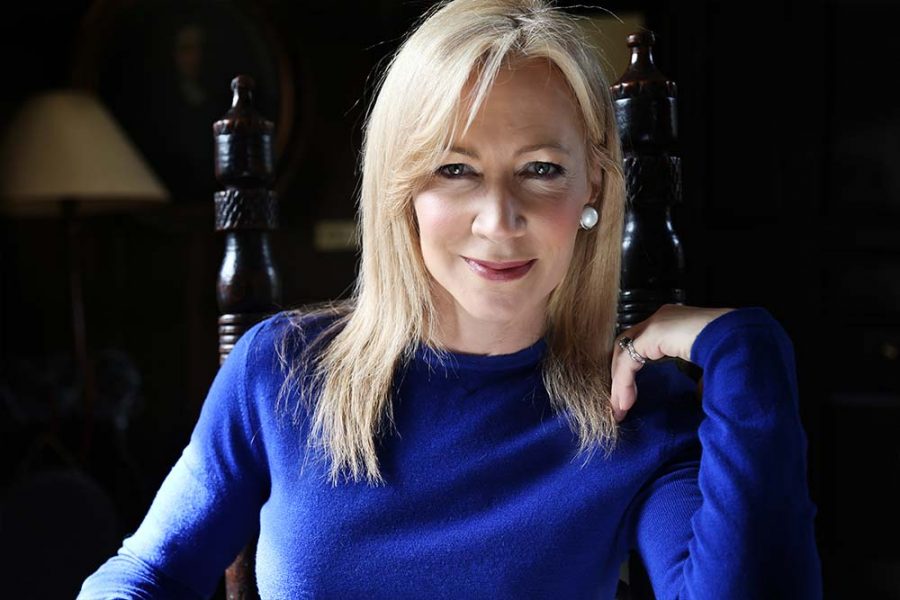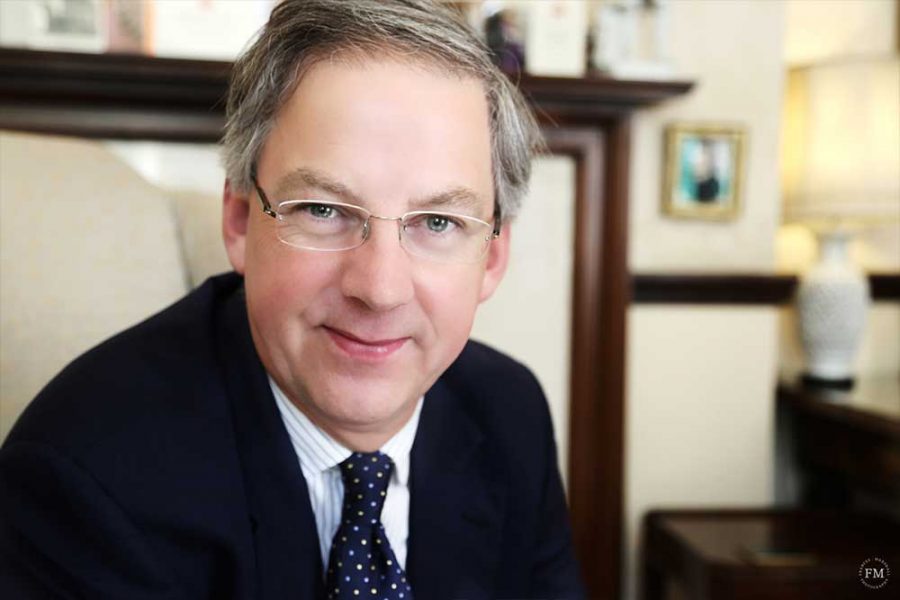Musicological Archaeology: Jane Alden

May 2015
Words by
Emer Nestor
Photos by
Frances Marshall
Jane Alden has recently been appointed Professor of Music at Trinity College, Dublin—a notable affair considering the Chair of Music had been vacant for the past 20 years.
She is a leader in the musicological field of Codicology and graphic notation, and a founding member of the innovative vocal ensemble, the Vocal Constructivists. Alden is also a Fellow at the Institute for Musical Research, University of London, and former Associate Professor and Chair of Music at Wesleyan University, Connecticut. Her recent publishing portfolio includes a monograph, Songs, Scribes, and Society: The History and Reception of the Loire Valley Chansonniers (2010), an edition of the known works of the 15th-century composer Johannes Delahaye, Johannes Delahaye: Chansons in Loire Valley Sources (2001), and a variety of articles on medieval, historiographical, and contemporary topics.
Final Note met with Alden in the beautiful grounds of Trinity College to discuss her new role within the university’s music department, alongside her fascinating research into French chansonniers and experimental music.
I was lucky enough to go to a primary school with a very strong musical tradition. I started the violin at age 7."

Can you give us some insight into your early musical training?
Both my parents were musicians, so music was a part of life from as early as I can remember. I did music classes with the émigré musician Ferdinand Rauter (‘Rau’) from age 4, where we sang and played with pentatonic chime bars. I was lucky enough to go to a primary school with a very strong musical tradition. I started the violin at age 7. The music teacher, David Joyner, was a talented arranger and we did a lot of theatrical shows, as well as ambitious ‘Classics’ including Bach’s 4th Brandenburg Concerto. Inner London Education Authority music courses (London Schools String Ensemble, Concert Orchestra, and Symphony Orchestra) introduced me to the joys of orchestral playing, with courses every school holiday. I sang in Finchley Children’s Music Group, a choir that specialises in adventurous new music. From age 13, I was a ‘Junior’ at Trinity College of Music, London, but my brother was the one with the real career (singing at English National Opera and touring America before his voice broke).
What’s so enticing about medieval music and chansonniers?
At Manchester University I was eager to learn about contemporary music, particularly works by living composers. And then I heard the Messe de Nostre Dame by Guillaume de Machaut. This was ‘newer’ (to me) than the newest music available. My astonishment at these unusual sonorities was shared by a number of others, and led me to conduct a performance of this work with the University Chamber Choir, alongside pieces by 20th-century composers. For my final year dissertation, David Fallows, a formidable influence on my musical education, sent me to look at a fragment of an 11th-century Exultet roll in the John Rylands Library saying “you seem like someone who might be interested in manuscript context as well as the tunes“. It was Professor Fallows who, a year later, introduced me to my first chansonnier—a 15th-century French book of songs with elaborate border decoration—and I was hooked.
When did you become interested in the world of codicology?
My introduction to chansonniers fortuitously coincided with a course I took (and adored) in Paleography and Codicology with Albinia de la Mare at King’s College, London. The Paleography Room at Senate House Library soon became my second home. Also at King’s, Reinhard Strohm memorably explained that a responsible editor does not presume ‘at’ once occurred in a manuscript with a hole between ‘I will meet you’ and ‘5 o’clock’ without considering if the spacing could equally have accommodated ‘before’, ‘after’, or ‘around’.
Is there a collection of manuscripts that you would like to examine in the future?
With Trinity’s extraordinary collection of medieval manuscripts on my doorstep, I’ll be hard pressed to want to look further afield, but I hope one day to make it to Basel to see the manuscripts of 20th-century composers in the Paul Sacher Foundation.
Within the manner in which you hear/experience music, how does graphic notation compare with standard western music notation?
The inscription is more direct, unmediated by engravers and publishers. Seeing a composer’s hand, even in ‘conventional’ notation, has an impact on performers, but the distinct aspect of graphic notation accentuates this experience. The unique format is more than just a means of communication: graphic notation is itself a manifestation of an idea, a visual hypothesis of a musical space. What does the composer wish to disclose by the notation? Is s/he asking a question or offering a possible solution? Either way, performers are more actively involved in the decision-making process than in other kinds of musical realisations.
Can any interpretation of graphic music ever truly reflect the intention of its author/composer? Do you think western musicology attaches too much interpretative importance to the idea of reconstructing the original text based on the assumption that this is what the composer meant in the first place?
The use of graphic notation generally reflects a composer’s wish to allow the performer(s) greater agency in making decisions pertaining to precise pitches, instrumentation, dynamics, timbre, etc…. In this regard, any interpretation has the ability to reflect the originator’s intention, allowing for that intention to be giving artists performative freedom. I do not see composers of graphic notation having any greater or lesser power than those who use standard western musical notation to pre-determine all performance outcomes. What would Bach have made of The Swingles?




I was attracted by the sense of the 'creative outsider' that Ireland seems to foster, in tandem with profound respect for cultural, historical, and artistic legacy."

Who do you count among your influences to date (music or otherwise)?
Jan Van Eyck, Cornelius Cardew, Christian Pisano, Kazimir Malevich, Samuel Beckett, the anonymous artists of the Chansonnier Cordiforme, Harry Beck, Guillaume Apollinaire, Antoine Busnoys, Le Courbusier, L’Oulipo, Mark Applebaum, Christine de Pisan, Patrick Keiler, Maimonides, my students, and my parents.
What attracted you to the appointment at Trinity, and what do you hope to bring to the role?
The Old Library, the Trinity Long Room Hub (Arts and Humanities Research Institute), the possibilities for future development, the students, staff, administrative leadership, being at one of the world’s great universities, and the extraordinary honour and challenge of filling the position of Professor of Music. Ireland’s deep and rich musical heritage makes it a place of visionary potential. I hope to facilitate musical collaborations that bring together people from oral and written traditions, old and new. I was attracted by the sense of the ‘creative outsider’ that Ireland seems to foster, in tandem with profound respect for cultural, historical, and artistic legacy. Trinity’s ability to balance history with innovation makes it the perfect place to develop new ideas that can gain traction. My work on medieval and contemporary composers opens doors to different musical communities, and interest in the visual and performative aspects of music brings me into contact with a variety of practitioners, all of whom can help enrich music’s role in society.
Are you settling into Dublin’s busy cultural scene?
There is more happening than I can keep up with—an issue I am hoping someone at Trinity’s Innovation Academy might solve with a Dublin arts events App. Although I have not yet had time to get fully acquainted with the scene, I have been delighted to find so many interesting venues within easy walking distance of Trinity, including wonderful art galleries, public squares, libraries, concert halls, pubs, churches, and pop-up musical happenings in shopping arcades and parks. Everywhere I go I meet people who suggest further places to visit and things to do. And since Dublin airport is so convenient, cultural events in London and other European centres are but a short hop away.
Tell us about The Vocal Constructivists, and how did the Cornelius Cardew project come about?
This project took shape during a sabbatical in 2009-10, as performance-based research became increasingly prevalent in musicology. Observing that instrumentalists greatly outnumbered choral groups in performances of experimental music, I formed the Vocal Constructivists to realise graphic scores using only the human body. The group cut its teeth on Cornelius Cardew’s Treatise, written in the mid-1960s. Cardew himself was a chorister at Canterbury Cathedral, and even though his landmark score had been performed by countless instrumental ensembles, it had never, prior to the Vocal Constructivists‘ performance at the South London Gallery in 2011, been sung.
In the first incarnation, the Vocal Constructivists came almost exclusively from trained, classical backgrounds. The group sang well, but I felt something was missing. A meeting, facilitated by Michael Parsons, with former members of the Scratch Orchestra introduced me to artists who performed musical works without the disciplinary restrictions of a conventional musical education. Given the ideological and historical connection to the very music I wanted to perform, it made sense to invite some of these musicians to join my group. This diversified the age-span, which now ranges from 19-73. Cross-generational learning is an important part of our rehearsal process, and sets the Vocal Constructivists apart from other ‘new music’ ensembles.
Cardew launched a certain strand of British experimentalism. Partly through the work of Michael Parsons, Howard Skempton, Stefan Szczelkun, and other members of the Scratch Orchestra, this lineage extends through to the present day. It overlaps in interesting ways with an American tradition that thrives at Wesleyan University, around Anthony Braxton, Ron Kuivila, Alvin Lucier, and Paula Matthusen. The Vocal Constructivistshave explored the intersection of British and American experimentalism along with a third area: Polish music. Focusing on living composers—Jan Duszyński, Bogusław Schäffer, Kasia Glowicka, and Andrzej Koszewski—we are collaborating with an art historian, Kasia Sobucka, and a film maker, Magda Fabianczyk, to bring Polish experimental music to a variety of diaspora communities.



With so many members having input into the musical decisions of the group, how is balance maintained within the ensemble?
Attendance leads to musical ownership: if people don’t come to rehearsals, they don’t have input regarding the musical decisions that are made. Members of the group have invested significant amounts of time and energy into collectively developing our artistic identity. Arguments have been limited to repertoire choices for certain occasions. The process has been remarkably collegial, even when confronted by challenges such as rehearsal venues not being available until 30 minutes before a show, and luggage being lost by airline baggage handlers.
Are there any exciting new works in the pipeline for the group?
Yes, several composers are working on pieces for the Vocal Constructivists: watch (and listen) to this space!
How important is it to you to maintain an equal footing within the worlds of performance and academia?
My background as a musicologist is firmly rooted in scholarship, and my work in performance goes hand-in-hand with a commitment to situating these developments in a larger intellectual milieu. The Vocal Constructivists provide a crucible for experimentation, while ethnographic interviews are part of our learning process.
What is the value of Musicology?
The term helps make sense of the fact that music is an idea, a practice, an art, a science, and a discipline.
Tell us about your book on the Scratch Orchestra.
The Scratch Orchestra and the Experimental Ethos looks at contemporary experimental music-making as part of a much longer sweep of musical innovation. Although the original Scratch Orchestra features in a number of recent publications—Edwin Prévost, Cornelius Cardew: A Reader (Copula, 2006); John Tilbury, Cornelius Cardew: A Life Unfinished (Copula, 2008); Tony Harris, The Legacy of Cornelius Cardew (Ashgate, 2013); and various articles by Virginia Anderson—much work remains to be done to situate this and similar initiatives in a broader historical context, to explore their impact on collective music-making in the UK and Ireland. I consider two major aspects: first, the participatory (collective, ethical, and social) and second, musical perception and new forms of aesthetic awareness. Both are informed by ethnographic work with original Scratch Orchestra members, the Vocal Constructivsts, and similar groups.
Recent scholars, such as Erika Fischer-Lichte in The Transformative Power of Performance: A New Aesthetics(Routledge, 2008), have argued that the recent ‘performative turn’ provokes, in actor and spectator alike, a renewed sensual relationship with the world, bringing attention not to the object of art (the painting, page, musical notation, etc…), but to the performance as event. Performance is no longer seen as the interpretation of a given object (the playwright’s text or the composer’s score) but as the unstable and re-enchanting lived experience of the here-and-now. The performance as event emerges from what Fischer-Lichte terms the ‘autopoietic feedback loop’ between artist and audience. This is already implicit in much of Cardew’s early work, particularly in The Great Learning, where the music is not fixed in the score, but arises out of differences in individual breath-length, vocal quality and ability. As Parsons observed (in the Cardew Reader), the ‘music’ does not exist in an ideal realm of aesthetic perfection, but in the here-and-now, in the physical, acoustic and human circumstances of each particular performance.
I extend the ‘autopoietic feedback loop’ to include the Vocal Constructivists’ practice. Our work is ‘in-formed’, with overall form arising out of the process of performance itself. This reaches beyond any traditional sense of notes or composition to include other realms of possibility, engaging the cultural and historical soundscapes of singers’ lives and artistic environments. The force of the communal imagination draws in the audience, so that engagement with the performers is unmediated. In this sense, the music’s ‘process’ and, finally, ‘out-formation’ goes beyond the piece to engage a renewed and liberated sense of cultural space. ‘In-form-a[c]tion’ takes place in performance, privileging the materiality of each singer’s voice and the embodiment of sound within and reshaped by the collective context.
All images displayed in this article are subject to copyright.
Share this article





